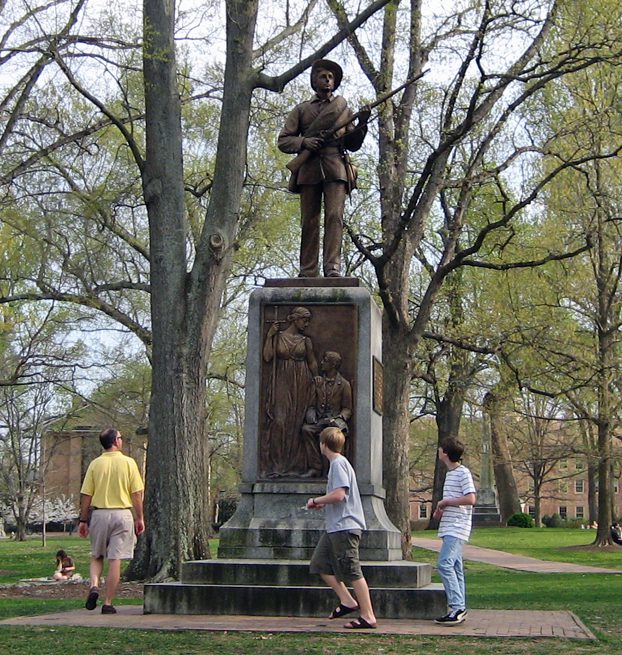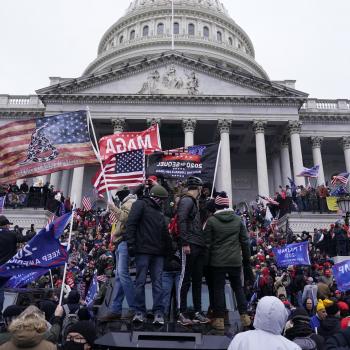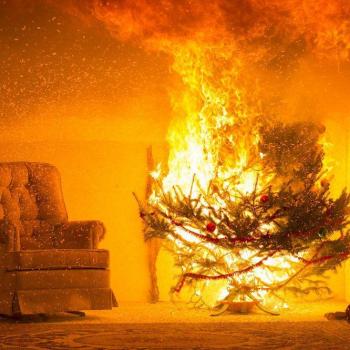Guest post by the Rev. Chris Furr
As an undergraduate at UNC, I took a number of history courses, including a course on the Civil War. I remember where I sat in the small auditorium, where just outside “Silent Sam” memorialized the students and alumni whose lives were lost fighting for the Confederacy. We were just across campus from William Saunders Hall, named for a 19th century KKK leader (Saunders Hall has since been renamed “Carolina Hall”). On the first day of class, the professor asked how many people believed the Civil War was about something other than slavery. More than half raised their hands.

The rest of the semester was a systematic academic proof that the root causes had to be traced to the institution of slavery if we were to have any academic or intellectual integrity at all. He wanted us to understand that saying the Civil War was about “economics” was insufficient, since the southern agrarian economy was built on chattel slavery. Saying it was about “state’s rights” was insufficient, since the right those states were fighting for was the legal right to (ruthlessly and violently) subjugate a group of people on the basis of skin color. On the last day of class, the professor asked the same question. There were fewer hands, but only slightly fewer. He was flabbergasted.
On Monday night, Silent Sam (the saying went that he fired a shot each time a virgin walked by) crashed to the ground, thanks to some rope and a group of protestors sick and tired of waiting for the university and the North Carolina legislature to act. This did not come about suddenly; Silent Sam has been the object of debate and protest for years, and surged back into focus when the clash between white supremacists and protestors resulted in violence and the death of Heather Heyer in Charlottesville last year. The legislature acted swiftly to take the power to remove the statue out of the hands of UNC officials. Newly elected Gov. Roy Cooper (D) offered Chancellor Carol Folt an out, saying she could remove the statue if it had become a threat to “public safety,” but she passed and was roundly criticized by those who wanted to see Silent Sam go. Letters to the editor and online arguments have filled UNC alumni forums ever since. Now, the issue has been forced and it’s clear the fight is only beginning.

The trope most often offered in defense of Silent Sam and monuments like it is that removing them “erases” our history. This is true, but not the whole truth. The history at stake is the history my classmates were holding fast to in that course, the history taught to them by the towns and cities in which they were raised, by their families, by the surrounding culture—myth but not truth. This history is a false history, romanticizing the antebellum South, insisting on “benevolent” slave owners, erasing the violence and trauma inflicted on black bodies, and ignoring how much wealth was accumulated by both private citizens and the government through forced labor. UNC is the flagship institution in what has been an exemplary system of state universities with highly regarded medical, law and business schools. It is frequently cited as one of the nation’s best educations given the cost of tuition. And its foundations were laid by slaves. This is history.
It is also true that Silent Sam and monuments like it were erected not so much as monuments to young men who lost their lives, but some 50 years after the Civil War—after Reconstruction had been sabotaged and fusion governments disbanded (sometimes violently, as in my hometown of Wilmington in 1898). In the heart of the Jim Crow South, they served as towering messages to passersby that the legacy of white supremacy would not be lost—a sanitized version of the lynching tree, communicating who ruled the economy, the courts, America. Julian Carr, a successful UNC alumnus and Civil War veteran, spoke at the dedication of Silent Sam in 1913.
Among his remarks:
“One hundred yards from where we stand, less than 90 days perhaps after my return from Appomattox, I horse-whipped a negro wench until her skirts hung in shreds, because upon the streets of this quiet village she had publicly insulted and maligned a Southern lady, and then rushed for protection to these University buildings where was stationed a garrison of 100 Federal soldiers . . . The cause for which they fought is not lost, never can be, never will be lost while it is enshrined in the hearts of the people of the South, especially the hearts of the dear, loyal, patriotic women, who, like so many Vestal Virgins (God’s name be praised), keep the fires lighted upon the Altars.”
It isn’t that the university students and other protestors gathered around Silent Sam Monday night want to erase history. They have perhaps finally understood the history that generations before them, including my classmates in that Civil War history class, have been trying to deny or dismiss. They are not interested in venerating or elevating a cause which was, at its heart, about systematic violence and oppression. They have reached the clearly moral conclusion that continuing to allow symbols of that oppression to remain only perpetuates the societal norms that made it possible in the first place. They are no longer willing to engage in the intellectual dishonesty it takes to sit in diverse classrooms, presided over by accomplished academics, and deny the simple facts about the stone walls and brick sidewalks outside. Perhaps they will be the ones to teach us that we cannot be healed of the festering racial wound that exists in this nation until we tell the truth about it—the whole truth. The truth is that Silent Sam was a symbol of the terror perpetrated on a large portion of Americans, and UNC students. Finally, after more than 100 years, they grew tired of studying, conversing and living under it.
If there was an admonition I would give to those who danced around Silent Sam’s corpse Monday night, it would be this: they should know that the sound the statue made when it hit the ground is going to ring like a shot through a deeply divided state. There was already a battle happening at UNC for the heart and soul of the university itself and the statewide system. A largely Republican Board of Governors has shuttered groundbreaking work the university was doing in the Center for Civil Rights and the Poverty Center, and openly feuded with system president Margaret Spellings (who is herself conservative, though apparently not conservative enough for the extremists who run the NC legislature).
There will be reaction from people in powerful places. Those who toppled Silent Sam are going to be villainized, perhaps prosecuted, and used as a tool for preying on the fears of white North Carolinians (and perhaps white Americans) who are still devotees of the politics of white supremacy. I suppose Monday night felt like a victory for those who have organized and worked for the monument’s removal. But as I looked at the image of that statue face down in the dirt, all I could think was that it was the end of another battle in a war we just can’t quit fighting, because we can’t tell the truth about why we started.
 The Rev. Chris Furr is Senior Pastor of Covenant Christian Church in Cary, North Carolina. He and his wife, Katie, have two sons.
The Rev. Chris Furr is Senior Pastor of Covenant Christian Church in Cary, North Carolina. He and his wife, Katie, have two sons.












